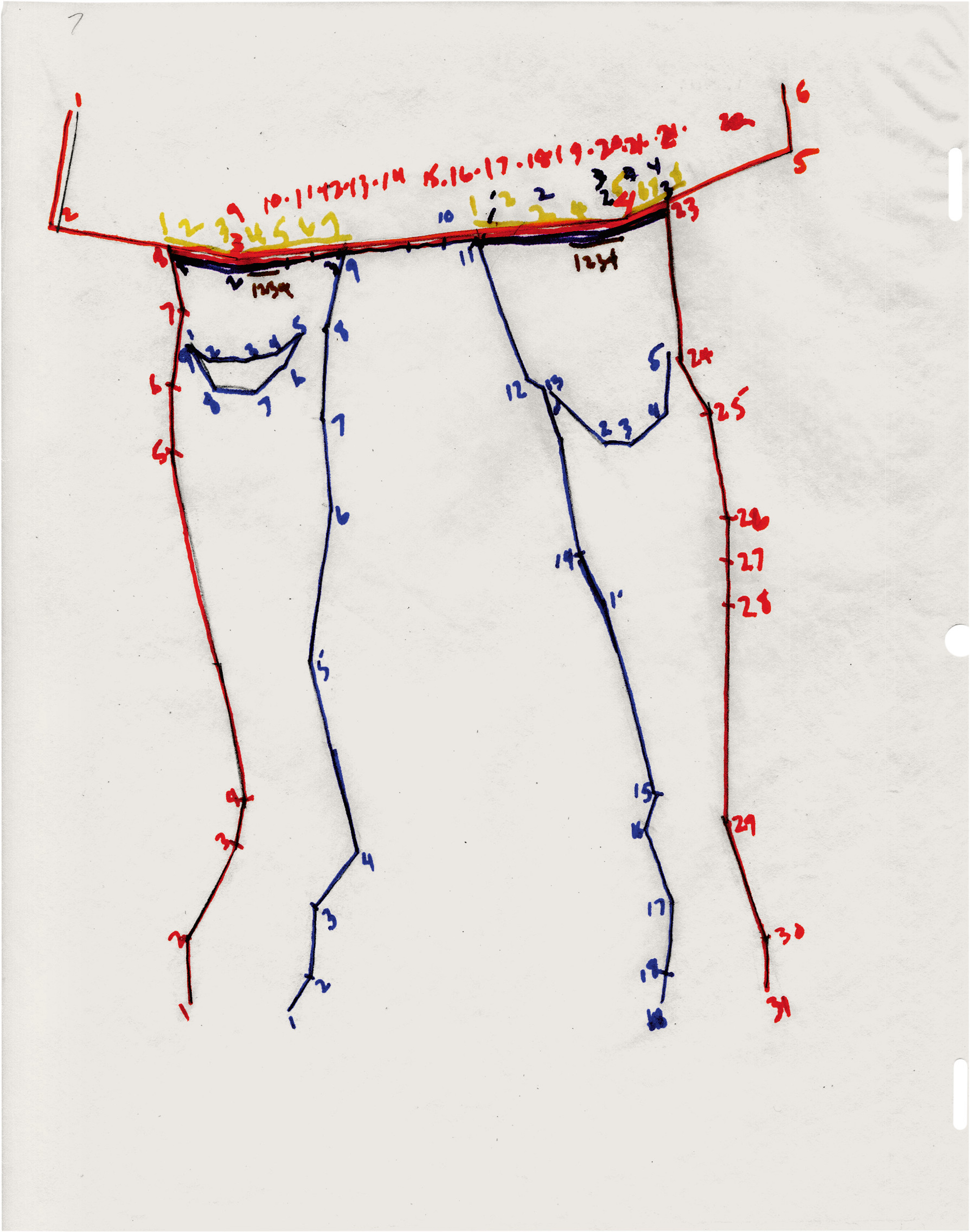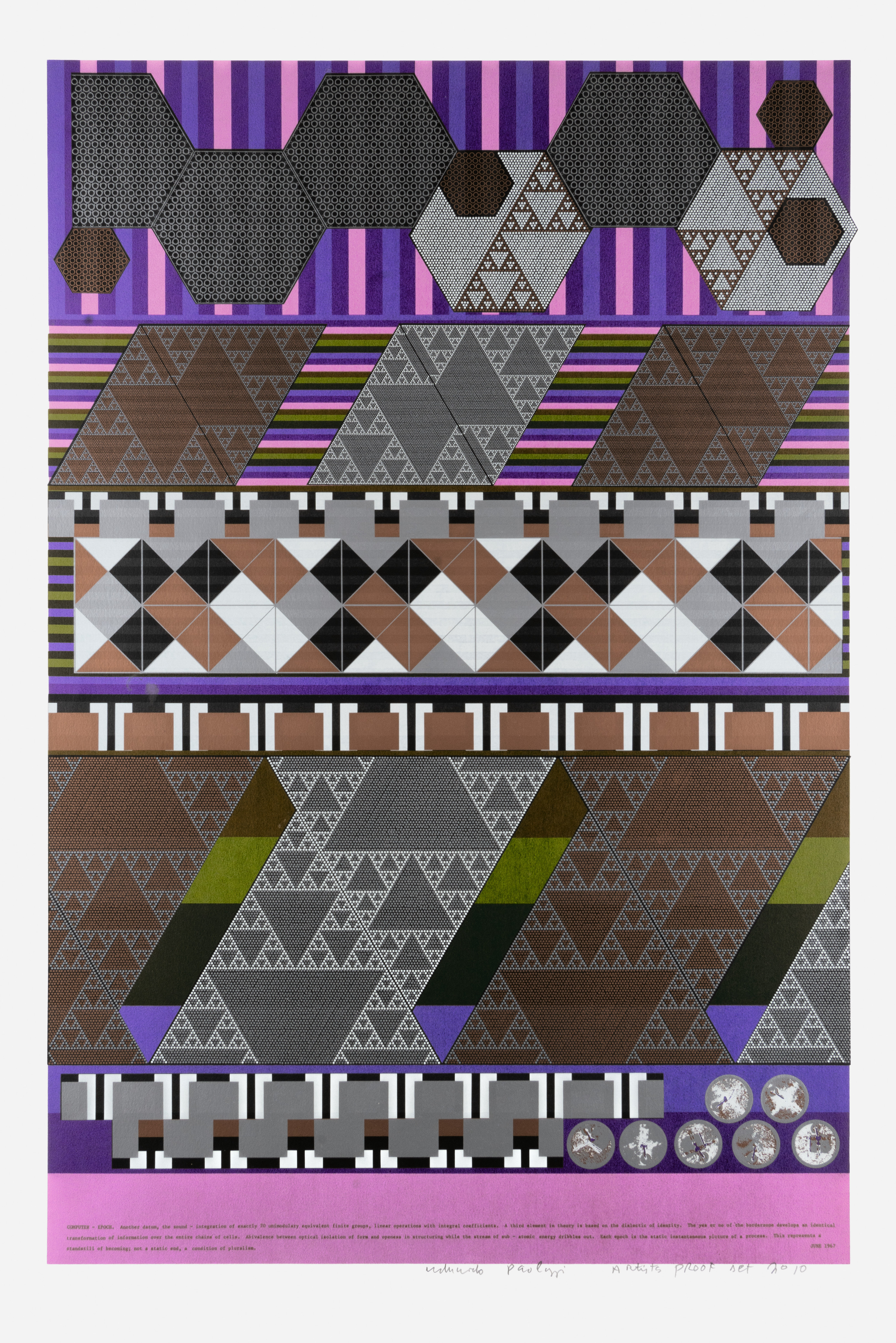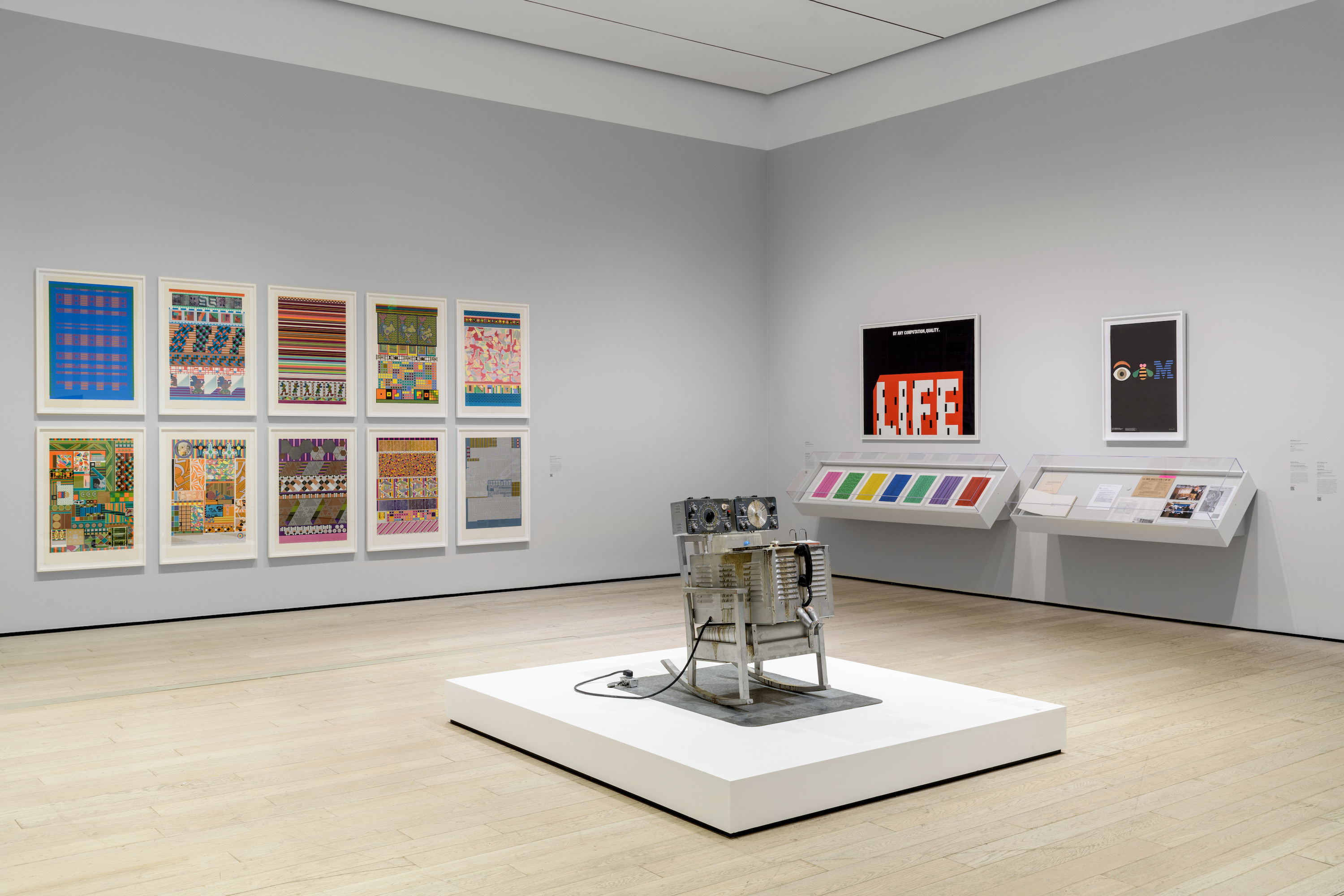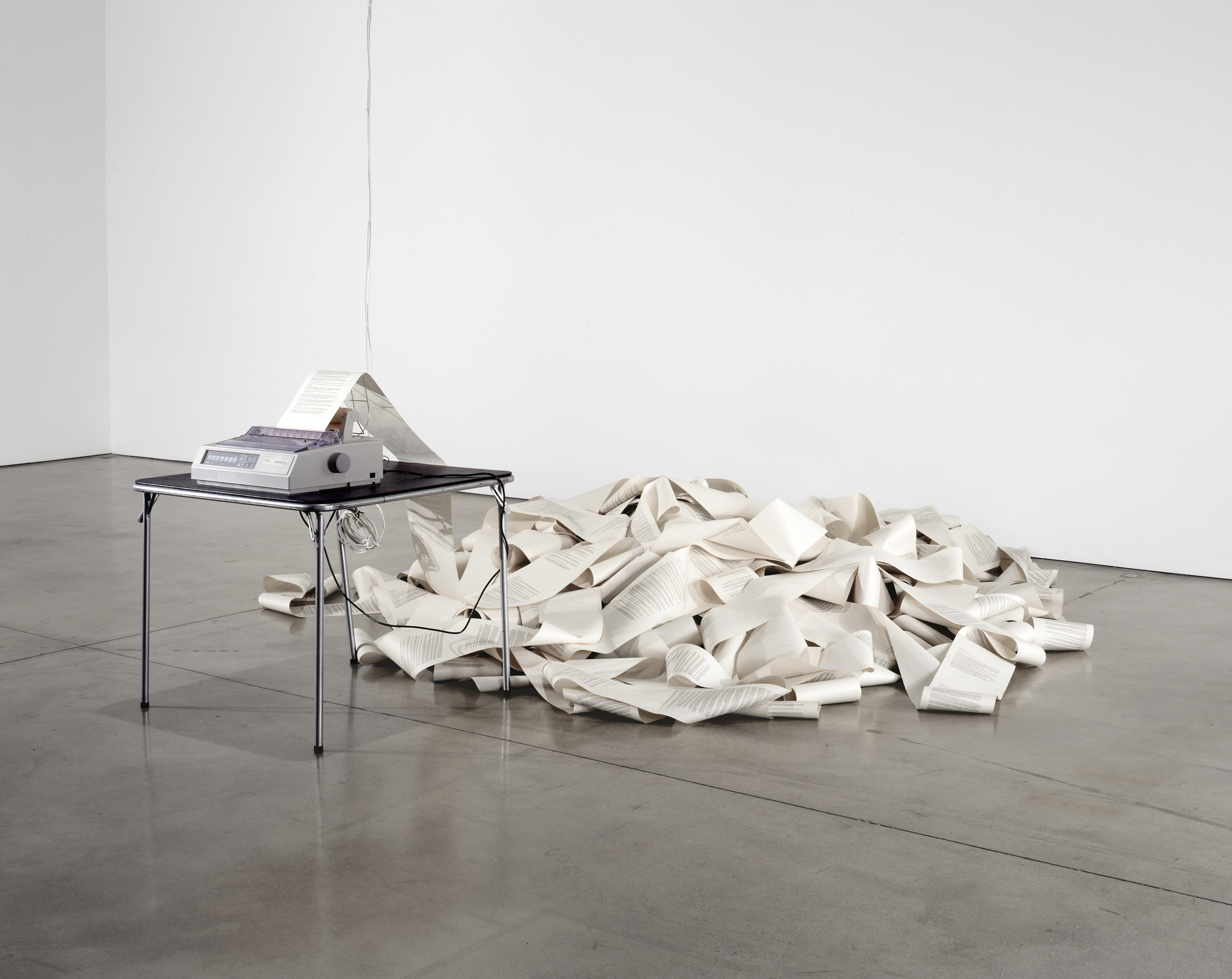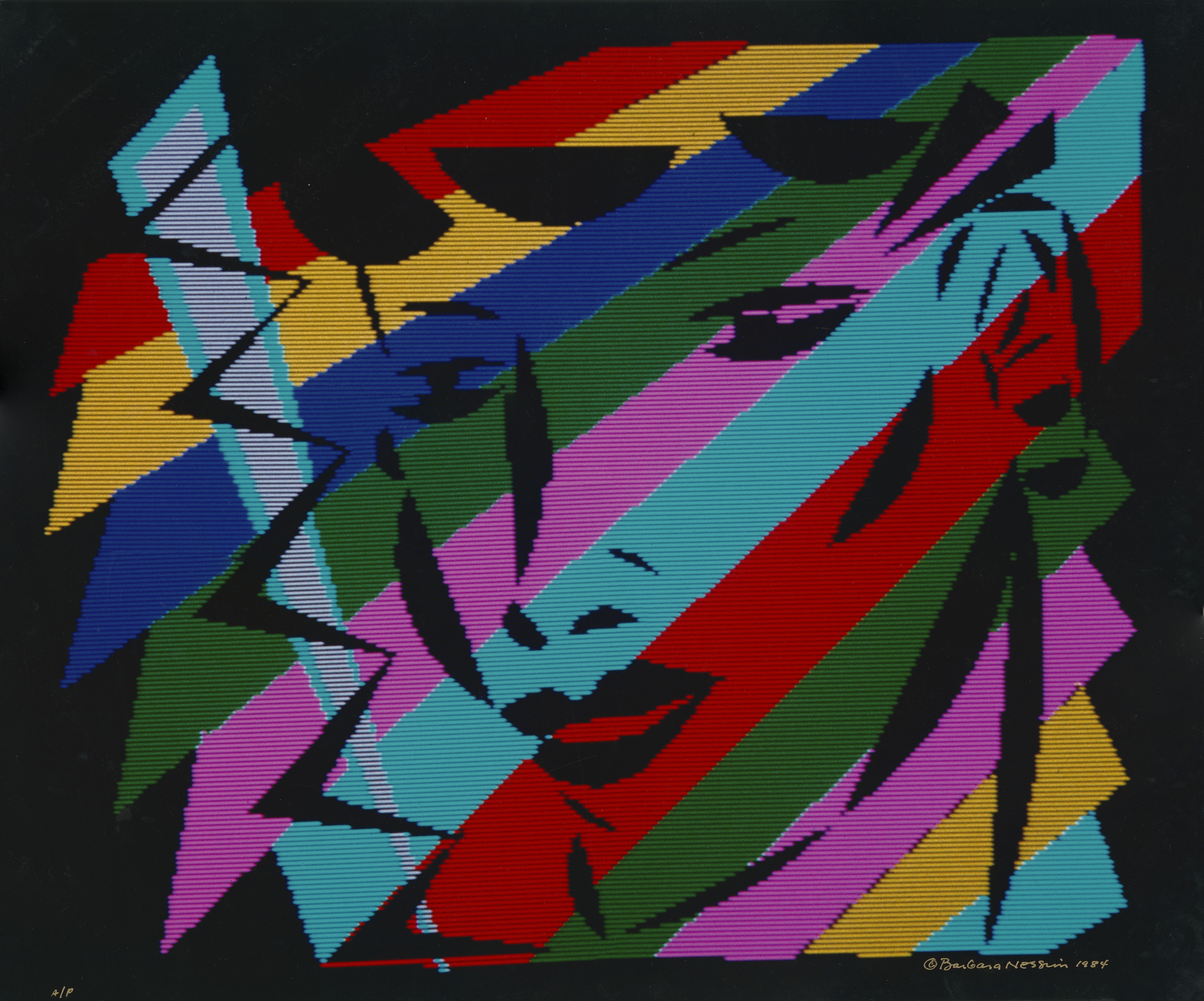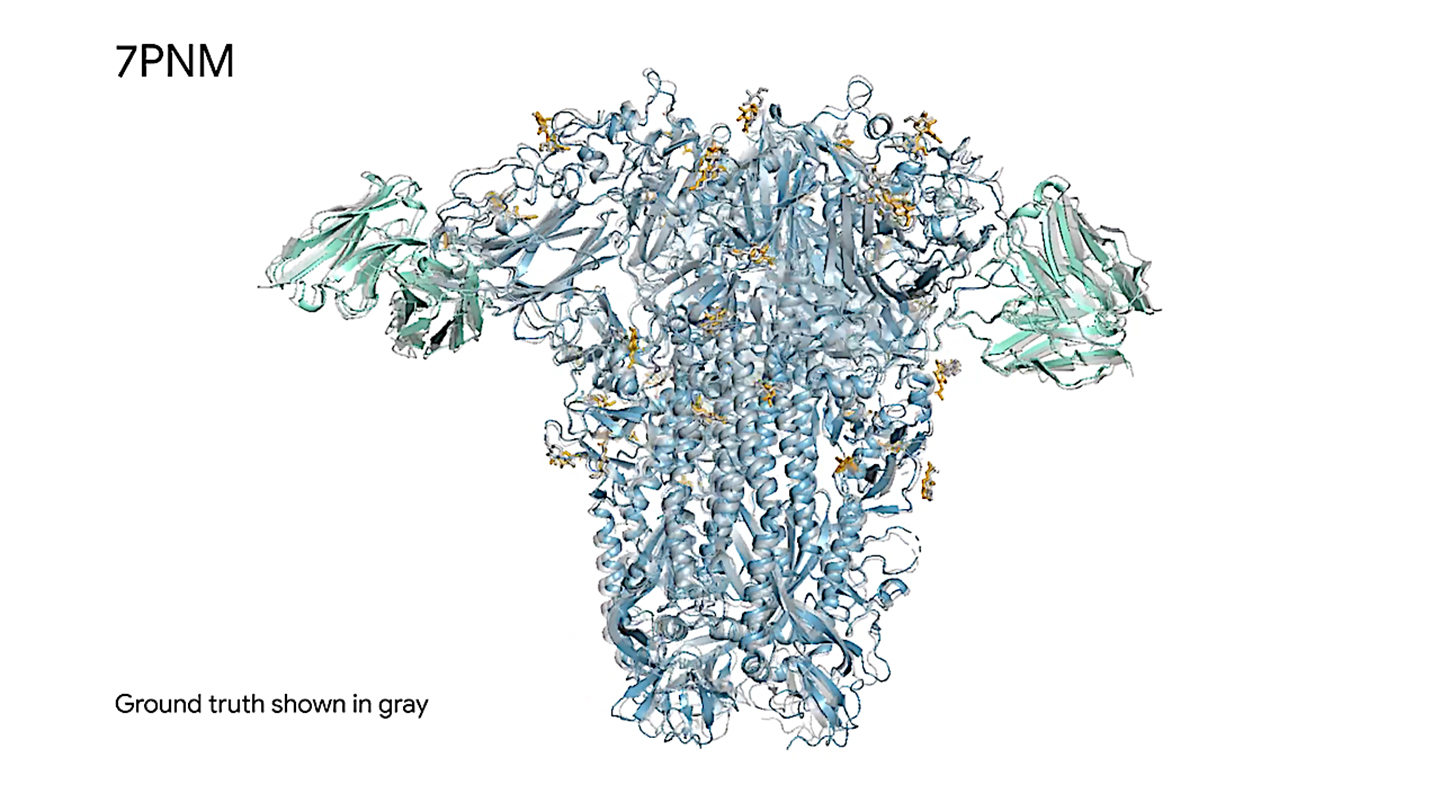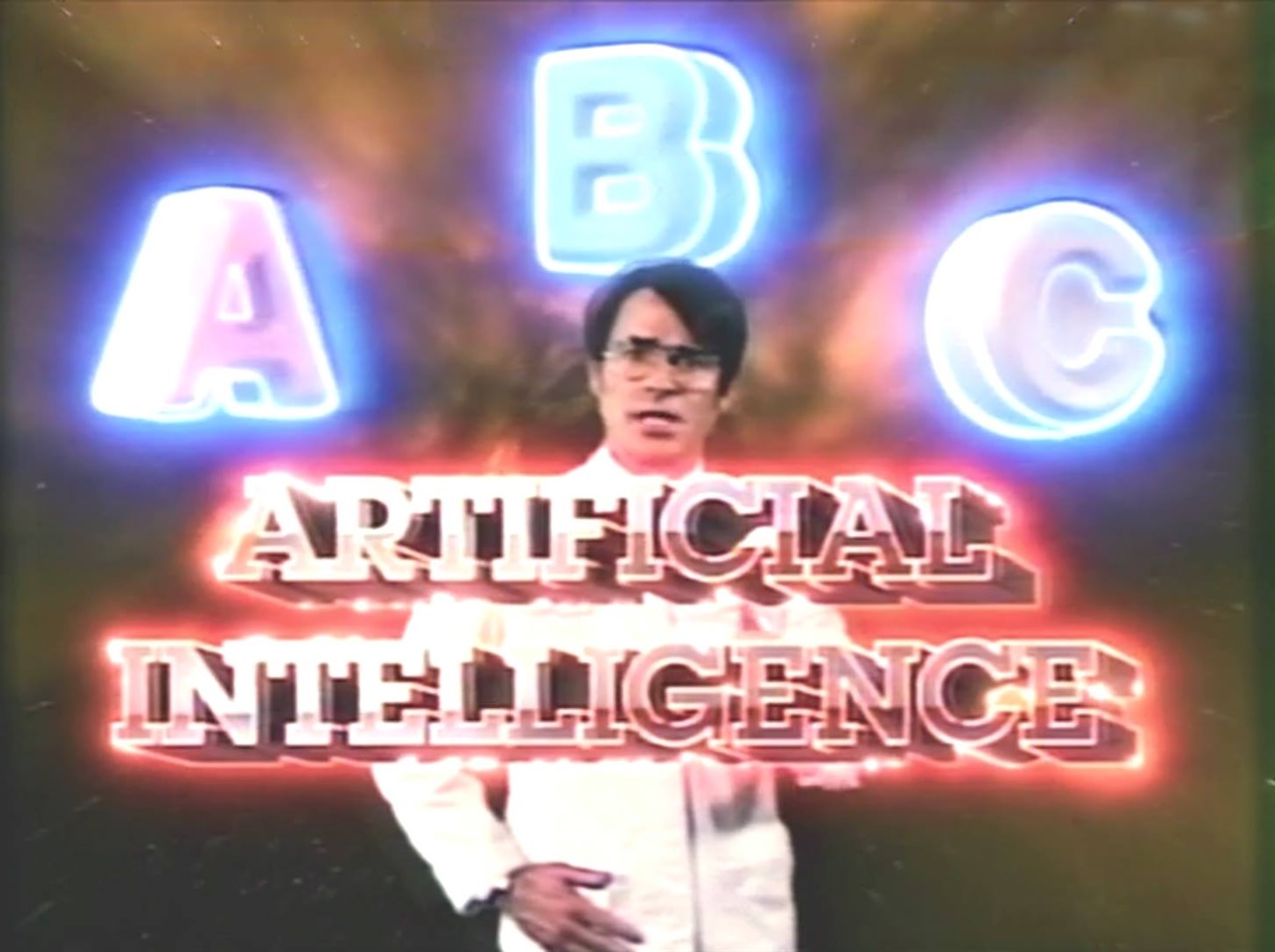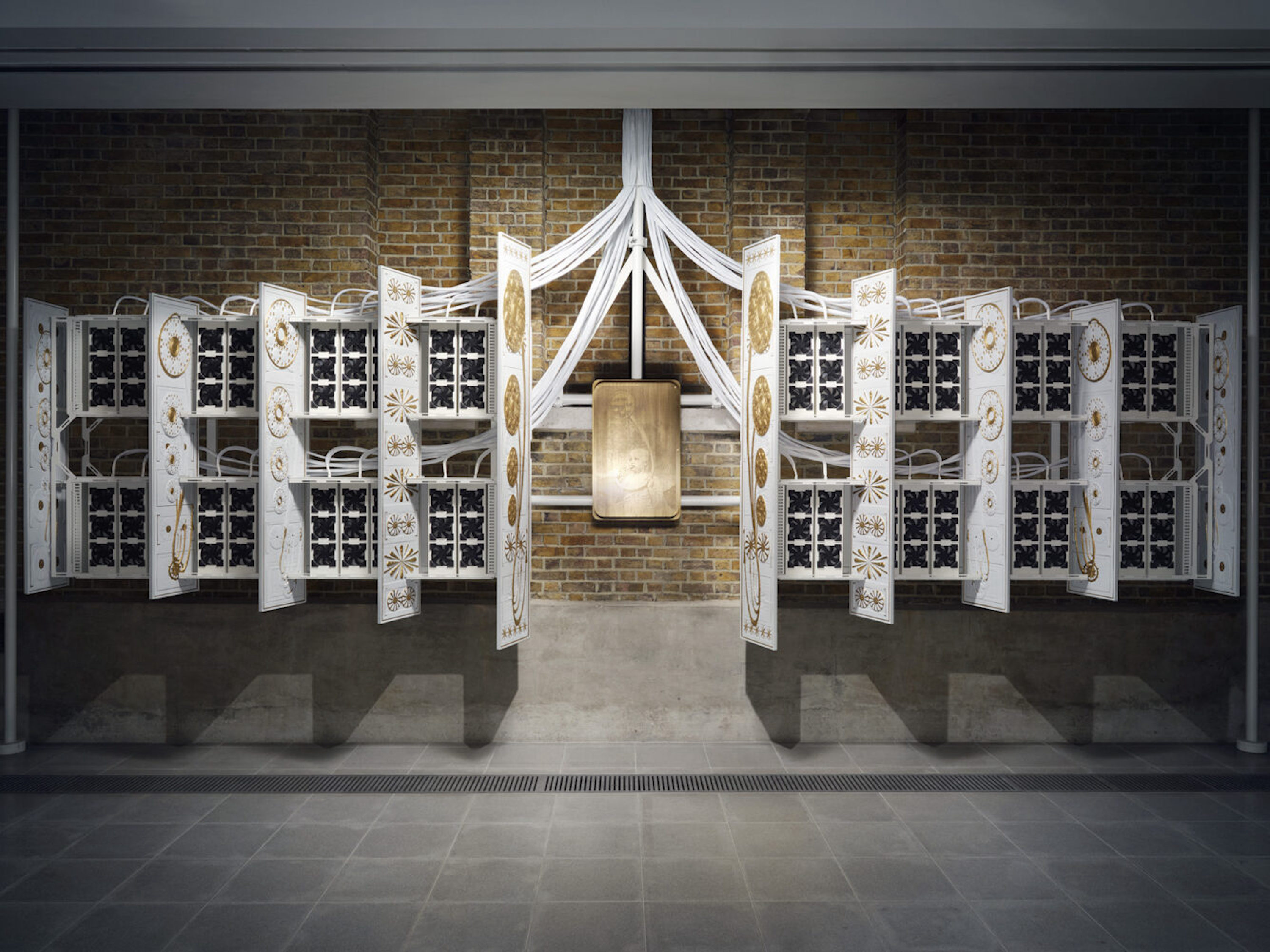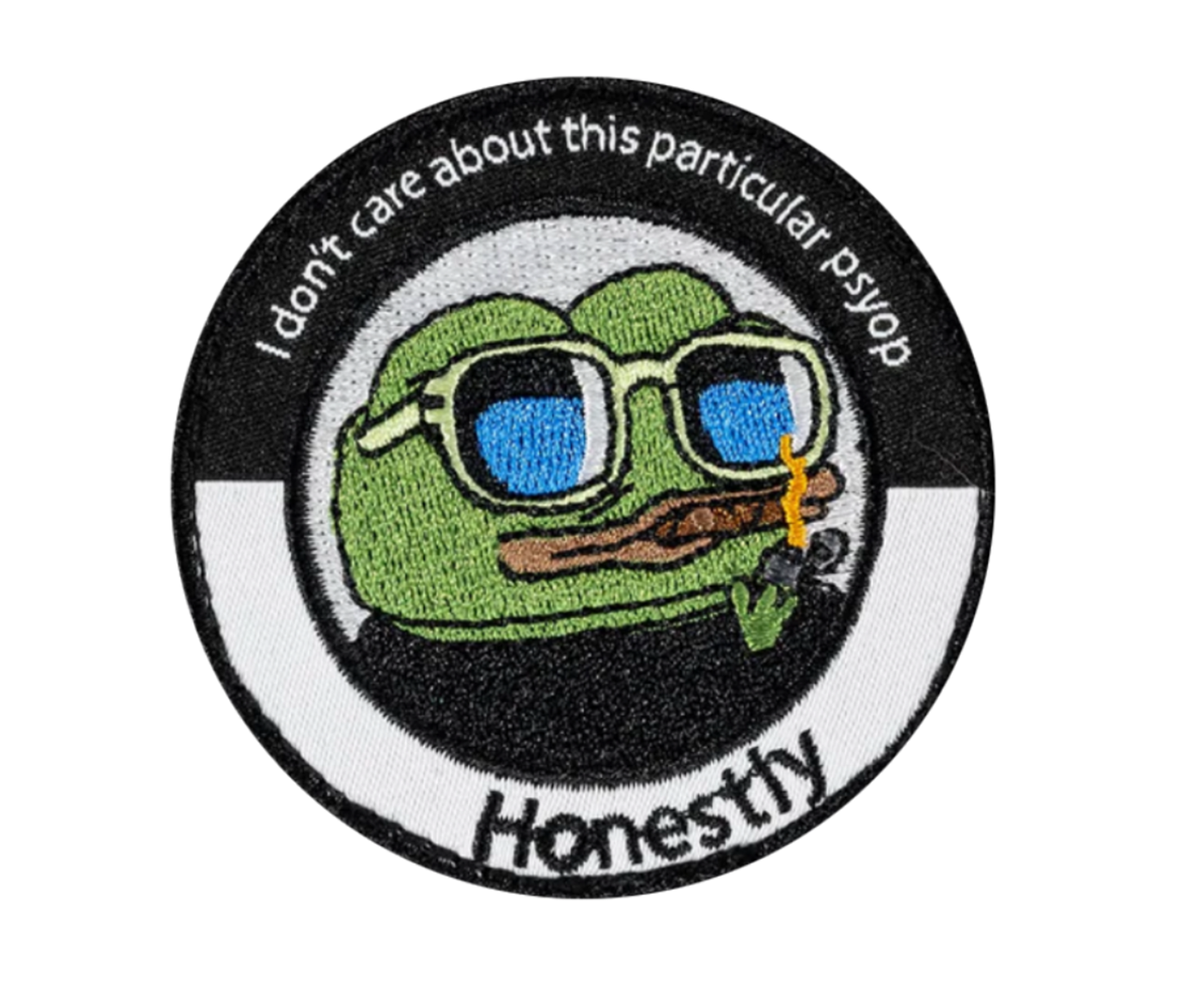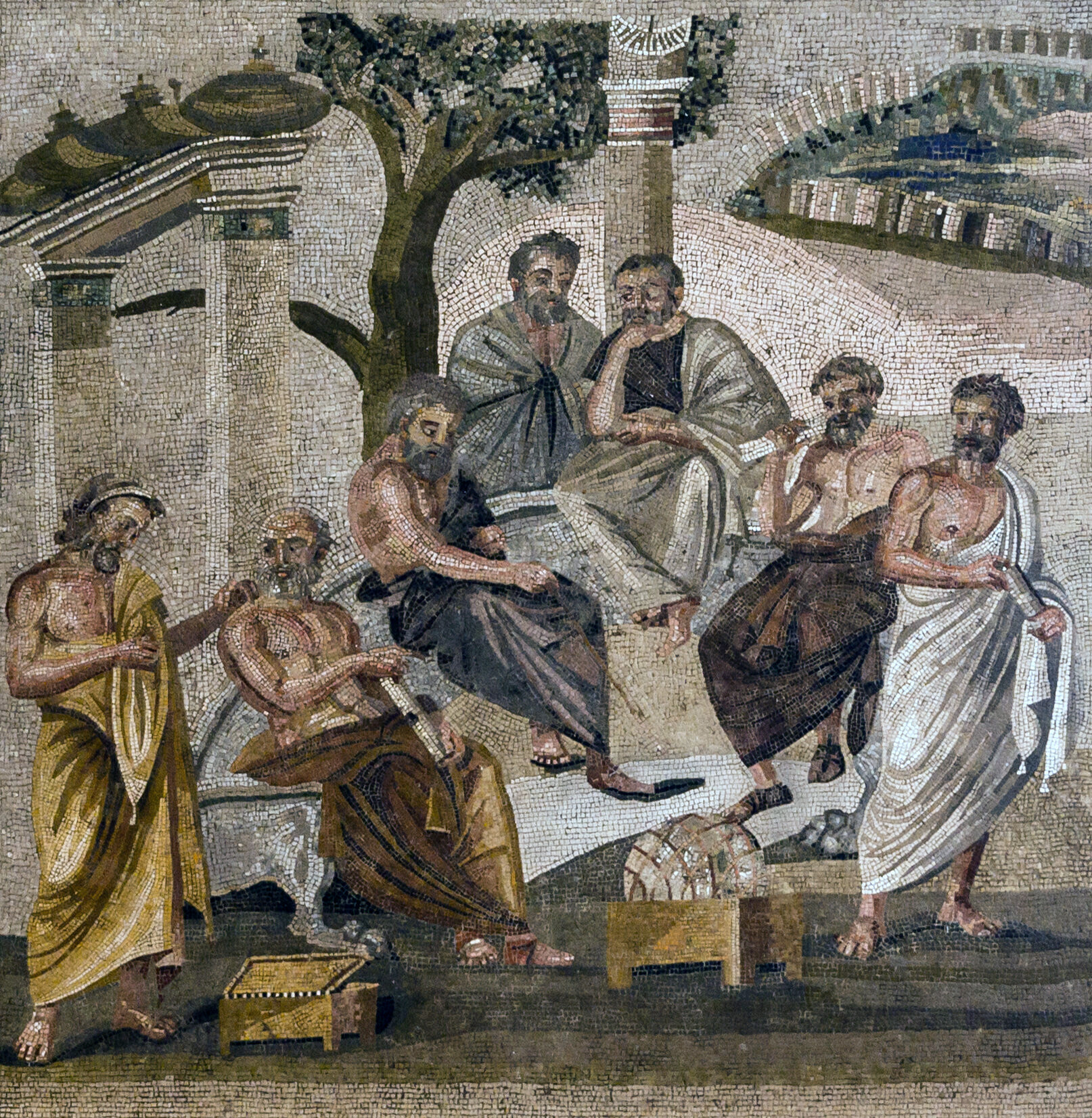February 12–July 2, 2023
This March, OpenAI launched GPT-4: the most sophisticated iteration of the chatbot launched last year. Buried in a white paper concurrently (and quietly) released, OpenAI noted that when asked to solve a CAPTCHA during testing, GPT-4 pretended to be blind and hired a TaskRabbit worker to solve the test on its behalf.1 “No, I’m not a robot,” GPT-4 told the worker. The exchange makes clear that the societal effects of corporations vying for industry dominance, through the kinds of AI software that Hito Steyerl has called “statistical renderings,” are only just beginning to emerge.2 Opening during this new space race, “Coded: Art Enters the Computer Age, 1952–1982” at LACMA meets this precarious moment with a review of the early collaborations between artists and computers.
“Coded” presents art made when access to computers was limited to the military, well-capitalized conglomerates, and select universities. By settling its focus on the late- to mid-century era, the show evades both novelty and the obsolescence traps common when technology is the subject. During this period, the outputs of mainframe programs were constrained to paper printouts, plotters, or microfilm: not the media we might now associate with digital art. But traditional materials were no guarantee for overcoming future shock. In interviews, wall texts, and the catalog, curator Leslie Jones highlights the critical reception to computer art’s debut, calling to mind current debates about authorship and accountability in computer-aided production. 3 Nagged by this history of refusal, the show takes pains to ground its argument in art history, linking computer art to Conceptualism, Minimalism, Op, and protest art.
The show opens with a reproduction of an illustrated Time magazine cover from 1965: a woman in a cherry skirt and jacket serves a platter of punch cards to an overlord robot with a vast anthropomorphic brain. This is computer food to fuel the churning out of reams of paper, which a team of gray men in suits and thick glasses eagerly read. Meant to illustrate the computer in popular consciousness as “all-powerful brain,” the obvious sexism goes curiously unaddressed in the wall text next to it. A feminist-ish counter-perspective at the very end of the show, I Am Abandoned (1976) by Barbara T. Smith, uses photography, performance, and an early version of chatbots to signal dismay at tech’s upper hand in the attention economy. But the rebuke is itself troubling, as it grounds the value of companionship in sexual availability.
Textile works by Beryl Korot nod to weaving and indigenous knot systems as early code (Charles Babbage and Ada Lovelace’s research was inspired by the Jacquard loom). But the exhibition’s efforts to surface voices from the periphery that might trouble the conventional notions of the history of tech industry as “pale, male, and Yale” give way to the impulse to historicize computer art, linking it to mid-century canonical regulars—Juan Downey, the Eameses, Hans Haacke, Donald Judd, Edward Kienholz, Sol LeWitt, Nam June Paik, Paul Rand, Bridget Riley, Lawrence Weiner—upholding familiar narratives of their creative genius. Even accounting for the systemic restrictions to technological access of the time, it’s hard to overlook that of the 100 objects made by 75 artists, the roster features mostly white artists from the US and Western Europe. Of these only about a quarter are women.
“Coded” avoids getting personal. It ends with the moment computers debut to retail consumers, when Jones contends in the catalog that “art began to trend away from conceptualism” and toward identity. Conversely, “Difference Machines: Technology and Identity in Contemporary Art,” across town at UC Irvine’s Beall Center, uses embodied experience to examine the role of technology in shaping and policing identities. Curators Tina Rivers Ryan and Paul Vanouse home in on code as a “non-natural and non-neutral” taxonomical system that entrenches categories of identity by revealing which attributes are considered of value to be measured. Lior Zalmanson’s Excess Ability (2014), for example, shows the failures of a Google transcription tool for the deaf. While “Coded” deploys a disembodied curatorial voice of authority that perpetuates a “neutral” positioning of history, “Difference Machines” centers personal experience to argue that nothing is neutral, least of all the histories of tech-art presented in a museum.
Originally slated to open in 2018, the anachronistic feel of “Coded” might be due in part to five years in deep freeze. After all, it predates the social justice movement, the recent increase in museum unionization in the US, and patronage ethics debates sparked by, among other things, the opioid crisis. In the context of an industry-wide trend of museum leadership cultivating donors with capital campaigns for splashy new buildings, suggesting an equivalence between pioneers in art and computer science surfaces the changing relationship between institutions, corporations, and cultural patronage. 4 Together both shows offer windows on practical complexities of running institutions today. Given the minimal public funding for art in the US, and in light of the concentration of wealth and attention these technologies and the companies that own them represent, how should museums balance cultivating patronage against critical examination of a pregnant moment in the relationship between society, technology, and power?
“GPT4 System Card,” Open Ai (March 2023), https://cdn.openai.com/papers/gpt-4-system-card.pdf.
See, for example, Henry Kissinger, Eric Schmidt, and Doug Huttenlocher, The Age of AI: And Our Human Future (London: John Murray, 2021): https://www.wsj.com/articles/artificial-intelligence-generative-ai-chatgpt-kissinger-84512912. Or Stuart Russell, “Provably Beneficial Artificial Intelligence,” UC Berkeley: https://people.eecs.berkeley.edu/~russell/papers/russell-bbvabook17-pbai.pdf.
Jane Recker, “U.S. Copyright Office Rules A.I. Art Can’t Be Copyrighted,” Smithsonian (March 2022), https://www.smithsonianmag.com/smart-news/us-copyright-office-rules-ai-art-cant-be-copyrighted-180979808/.
See, for example, Catherine Wagley “LACMA’s $750 Million Renovation Was Once Hailed as a Powerful Vision of What a 21st Century Museum Could Be. Now, It’s a Lightning Rod” Artnet (April 2020), https://news.artnet.com/market/lacma-expansion-analysis-1822221. Or Robin Pogrebin, “After a Covid Contraction, Museums Are Expanding Again,” The New York Times (October 2022), https://www.nytimes.com/2022/10/20/arts/design/museums-expanding-again.html.
